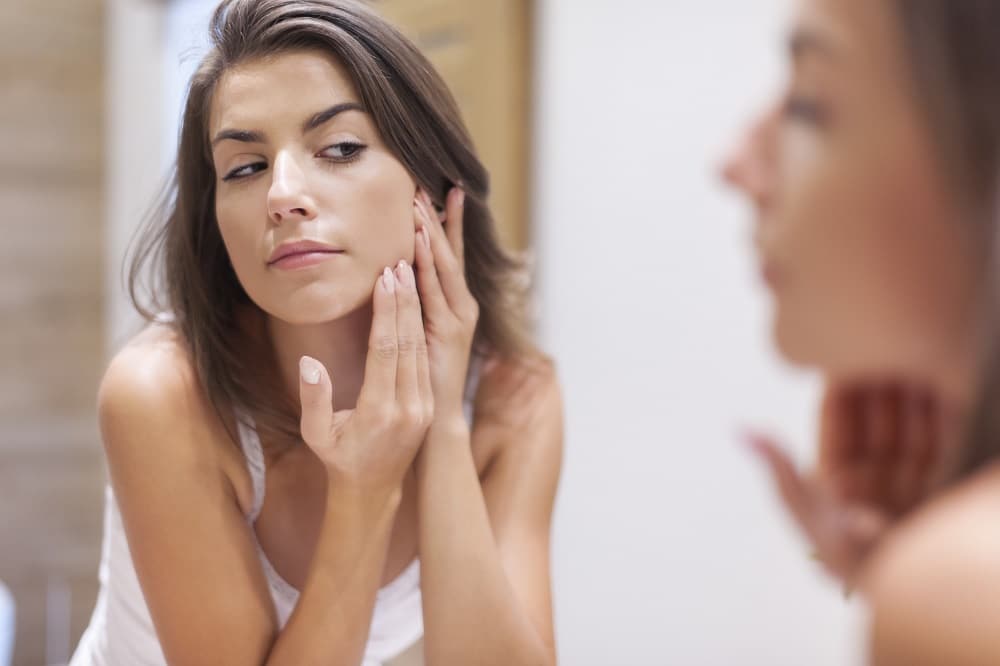Acne is the most common skin disease in the United States, affecting men and women of all ages. But not all acne is the same, and different types of acne respond to different treatments.
Acne is a serious dermatological condition that occurs when pores in the skin or hair follicles become clogged with oil and dead skin cells. Bacteria get trapped inside the pore, triggering inflammation and mild infection.
Acne can present itself in many forms, including pimples, blackheads, whiteheads, nodules, and cysts. Depending on the type of acne you have, there are specific treatment options to control and treat acne and get you back on the road to clear skin.
What Causes Acne?
Mild to Moderate Acne
Acne symptoms can range from mild to severe and can last a few days to several years. Mild acne breakouts are generally temporary and can often be treated with over-the-counter topical medications that include benzoyl peroxide. These treatments are typically applied to all acne-prone areas in the morning.
If acne persists after several weeks of using over-the-counter treatments, retinoids such as Retin-A, Differin or Tazorac may be recommended. A pea-size amount is generally applied to the entire face at night, as the medication is deactivated by sunlight. Topical antibiotics like clindamycin, erythromycin, and dapsone can also be prescribed. With all of these treatments, it is important not to “spot treat,” but to treat all acne prone areas.
Oral antibiotics, including doxycycline and minocycline, can also be prescribed to reduce the number of inflammation-causing bacteria. These antibiotics are typically only used for a few months and should be taken as directed.
Hormonal Acne
All types of acne have one thing in common: fluctuating hormones. Teenagers are especially prone to acne during puberty when constantly changing hormones stimulate the oil glands on the face and body, but hormonal acne can also affect adults.
This type of acne is especially common in women and can worsen with hormonal fluctuations during the menstrual cycle or menopause. Some hormonal replacement therapies that replace lost estrogen and progesterone with progestin can also cause hormonal acne breakouts.
Hormonal acne most commonly shows up on the cheeks, chin, and jawline — not on the forehead, nose, and chin, as is common with other types of acne during puberty — and can include blackheads, whiteheads, and cysts.
Treatment for hormonal acne includes oral contraceptives to stabilize fluctuating hormones or the drug spironolactone (Aldactone), which can also be taken to regulate hormonal surges.
Mild hormonal acne may also respond to over-the-counter retinoids or products with Benzoyl peroxide, which can help remove oil and dirt from pores, reduce inflammation and kill bacteria. For more severe cases, a dermatologist may recommend a prescription-strength retinoid along with an antibiotic such as tetracycline, minocycline, erythromycin or doxycycline to clear bacteria.
Cystic Acne
Cystic acne, the most severe form of acne, is caused when inflammation goes deep into the skin, creating a painful red “bump” that is often filled with pus. Cystic acne won’t respond to over-the-counter treatments and won’t go away on its own. If left untreated, these cysts can burst, leading to more inflammation and permanent scarring.
Treatments for cystic acne include oral antibiotics to control bacteria and reduce inflammation, as well as birth control pills to regulate hormones, prescription-strength topic creams or gels, or Accutane, a prescription medication that reduces the amount of oil released by oil glands.
Typically, patients take Accutane — which is available under several brand names — once or twice daily for as long as five months. Acne is often cleared completely and permanently after one round of treatment.
A Cleaner Diet Leads to Clearer Skin
No matter what type of acne you have, cleaning up your diet can help to clear your skin. Processed foods and foods high in sugar such as candy, juice, and sweets can cause insulin levels to spike, which can trigger a hormonal change in the body. Dairy is also rich in hormones, which can cause acne to worsen. Stress can also contribute to acne breakouts by causing an increase in hormones released.
A great strategy to combat all kinds of acne is to eat more whole grains, beans, fruits, and vegetables, drink plenty of water and get plenty of sleep — and never pick at acne lesions! Picking at pimples and cysts can lead to infection, which can cause acne to deepen and spread and can even lead to scarring.
Also, when taking prescription acne medication, you should stop using over-the-counter acne products. When combined with prescription products, these treatments can be too drying and irritating to your skin. Wash your face with a gentle daily cleaner, avoid abrasive soaps and scrubs, and use a facial moisturizer with sunscreen with an SPF of 15 or higher every day.
Remember that the goal of most acne treatments is to improve acne by 60-70% within three to four months. Results take time, and there is no miracle cure. In fact, many people find that with treatment, their acne actually gets worse before it gets better.
Looking to Visit a Dermatologist for Acne Treatments?
To learn more about the different types of acne and available treatment options, contact U.S. Dermatology Partners today. We have multiple locations throughout the country, so fill out our simple online form to get in touch with us. One of our local team members will reach out to you shortly to answer your questions or schedule an appointment for you to visit us soon.
Find a location near me
or

